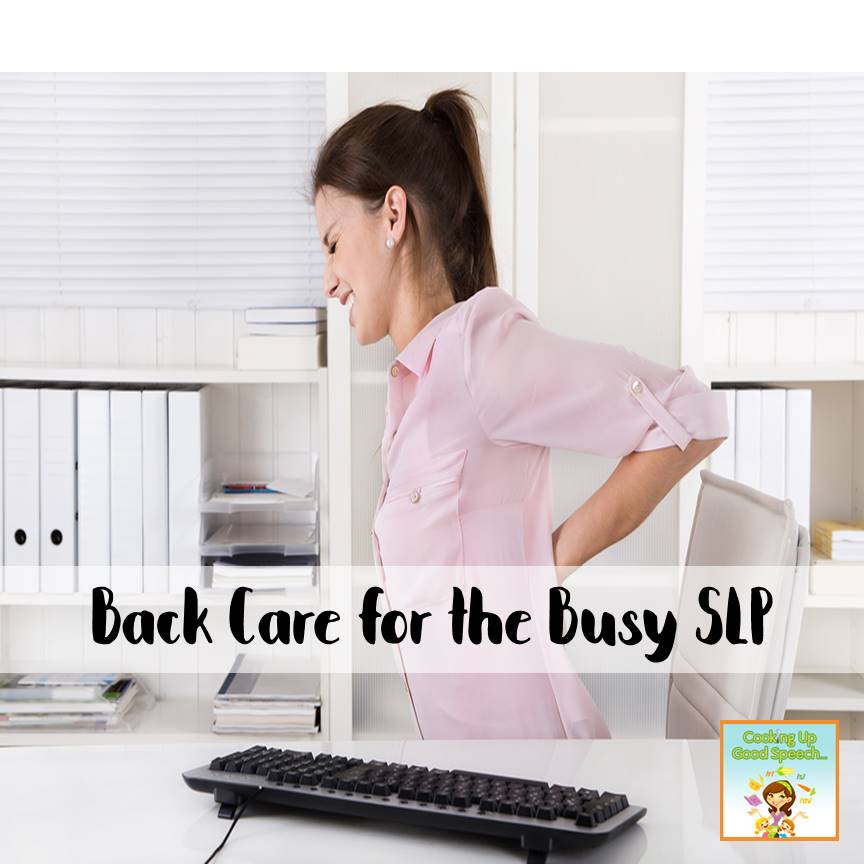
I generally blog about therapy ideas related to speech and language as well as food and ways to incorporate it into your therapy, so the focus of this post may seem a little off-topic at first….but keep reading! My hope is that you will be left with some helpful advice that you can start using right now— because we can’t effectively take care of students, patients, and clients until we take care of our own health and well-being first!
As a new school year begins (or is already underway for many of us) I can’t help but remember where I was, so to speak, last year this time. It’s been quite a few months since I entered a new post on my blog (which, by the way, has been running since 2011) but I have a pretty good reason! For months, sitting, standing, walking, sleeping—pretty much any action verb you can think of, has been something I will never take for granted again. The reason? My back! You know, the posterior part of the human body made up of thirty-three little bones that run from the neck to the pelvis.
Today I sit typing away with ease but a year ago I was in a place that I never wish to return. I started having tremendous back pain last May but figured I just pulled a muscle, strained a ligament, twisted or turned a little too quickly. I couldn’t pinpoint the exact movement that caused all of my distress. Maybe it was that Tabata routine I did the previous week? Or that HIIT (high-intensity interval training) workout? Maybe it was all those years of high school and collegiate sports. Maybe it was the 10+ pound baby I carried and delivered all those years ago? Perhaps it was the way I sat at my computer desk or the way I leaned over while assisting a student? Was I holding my work bag incorrectly or weighing it down with too much stuff? Or maybe I’m just getting old! Ugh! I kept asking myself what I could have done wrong. The pain never went away and gradually intensified.
So I started trying everything to lessen the pain….physical therapy, acupuncture, chiropractors, several cortisone injections. I invested tons of time and money, but nothing helped. Getting through my workday was a challenge. I tried my best to hide my discomfort at work, but it was exhausting. Although I love my job (after many years of being unhappy in the public schools I found my home in a fantastic small private school for students with dyslexia and language-based learning disabilities), I started taking days off due to lack of sleep and intense pain. I refused to see a surgeon and just kept pushing through it, hoping some of the therapies would eventually work. I finally gave CBD oils and ointments a try. They were AMAZING! (Believe all the hype you are hearing about this stuff!) It took the edge off, however, the cost started to add up (expensive things come in small packages!) and I realized that I could not live on CBD for the rest of my life.
After much denial and resistance, I finally saw an orthopedic surgeon. As it turns out, I had a back condition that no amount of p.t., acupuncture or any other therapeutic measure would cure. The doctor recommended back surgery. Those were the words I was dreading. How could I need back surgery?! I was once an athlete and fitness instructor! I still exercise regularly! I live a healthy lifestyle. Apparently, those things didn’t really matter and may have actually contributed to my situation.
After much thought, I sought out a second opinion, this time, a neurosurgeon. He concurred with the first doctor. He explained my condition, called spinal stenosis, (a narrowing of the spinal column that puts pressure on the spinal cord and nerves that can cause pain or numbness when walking and over time leads to leg weakness and sensory loss) and recommended a procedure called a spinal laminectomy
(also known as spinal decompression.) During the procedure, the lamina or bony walls of the vertebrae, along with any bone spurs, are removed. The aim of the procedure is to open up the spinal column to remove pressure on the nerves. I liked his demeanor and confidence. (Much like some of our students “click” with a particular SLP.)
So here’s the short version to the rest of the story: Fast forward to the end of May 2019 and I was in a hospital operating room having back surgery. I woke from the surgery with immediate relief! I took about a week off from work to recuperate (and enjoy the thoughtful flowers, fruit baskets and cards from colleagues, friends, and family). I returned to work to finish the school year pain-free! I am currently learning to exercise in a way that is more back-friendly. I joined a yoga studio and started taking classes regularly. I can’t say enough good things about how amazing this form of exercise truly is–no matter your age or ability level, EVERYONE can benefit from yoga! I added some interval training with walking/running, and continue to incorporate TRX training to help with stability and core strengthening without the high impact (and I will avoid high impact routines–for now!)
I’m an Amazon Affiliate
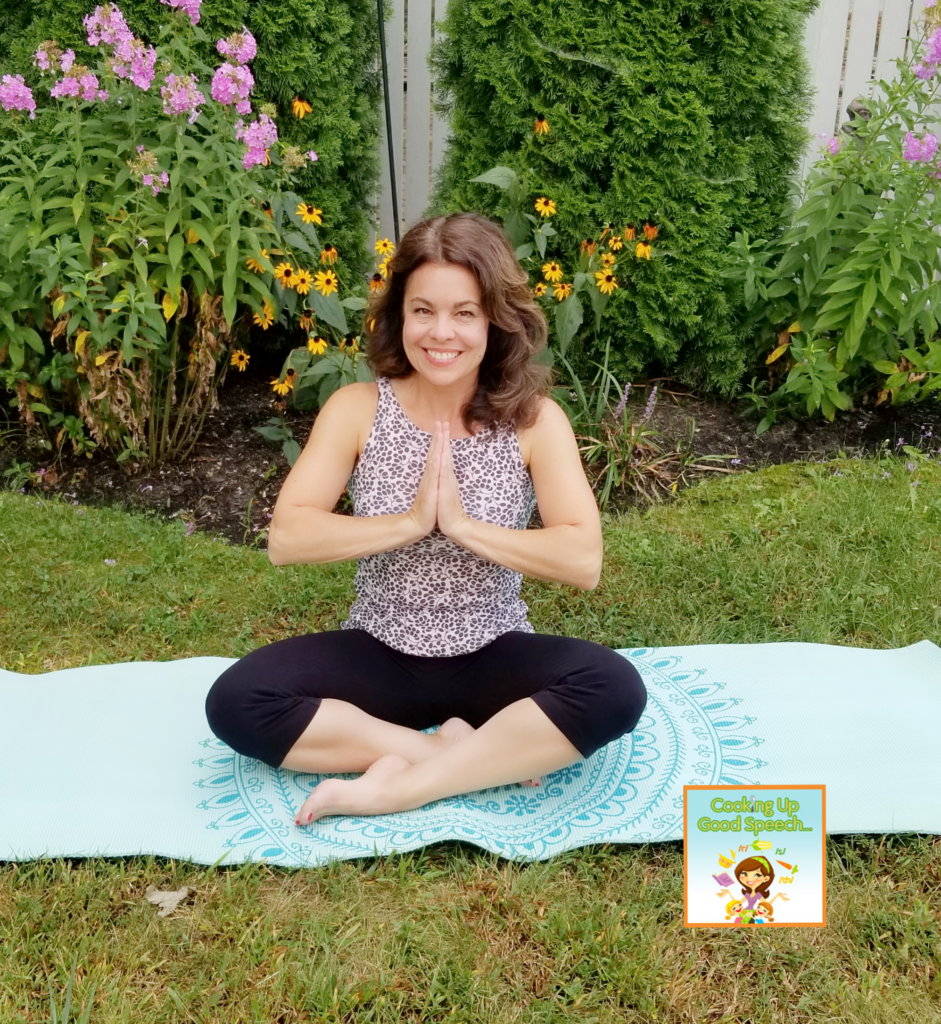
https://www.nih.gov/news-events/nih-research-matters/yoga-eases-moderate-severe-chronic-low-back-pain
I luckily bounced back rather quickly, but the healing process continues. I’m learning to improve my awareness of how I sit, stand, walk and function in my work environment. I know the way and duration I sit at the computer has contributed to some of my back issues, as well as the manner in which I interacted at the therapy table with my students. I’ve improved my awareness of healthy back care with the help of research and trial/error.
Today, I’m passing on some suggestions to consider as you move forward in your school year. I hope it helps you rethink the way you too may be moving, sitting and standing.
First, here are some statistics I found:
Key Findings and Statistics about Back Pain
- Back pain is the second most common cause of missing work, only after the common cold and contributes to about 93 million lost workdays and $5 billion in health care costs every year.
- Approximately 80% of Americans will experience back problems at some point in their lives.
- Back problems are more common in adult women than men
- More than one in three adults say back pain impacts everyday activities, including sleep.
- 29% of Americans believe stress is the cause of their back pain
- Chronic pain alters brain function, impairing attention, short term memory, judgment, and social skills.
I’ve put together some information I have learned about back health. I continue to practice this advice to help me remain pain-free.
1.Be aware of proper seating at your desk chair at work/home.
Your desk and chair play a crucial role in back strain and how it may develop. When you sit in an unnatural posture over long periods of time, it results in stress, strain, and injury.
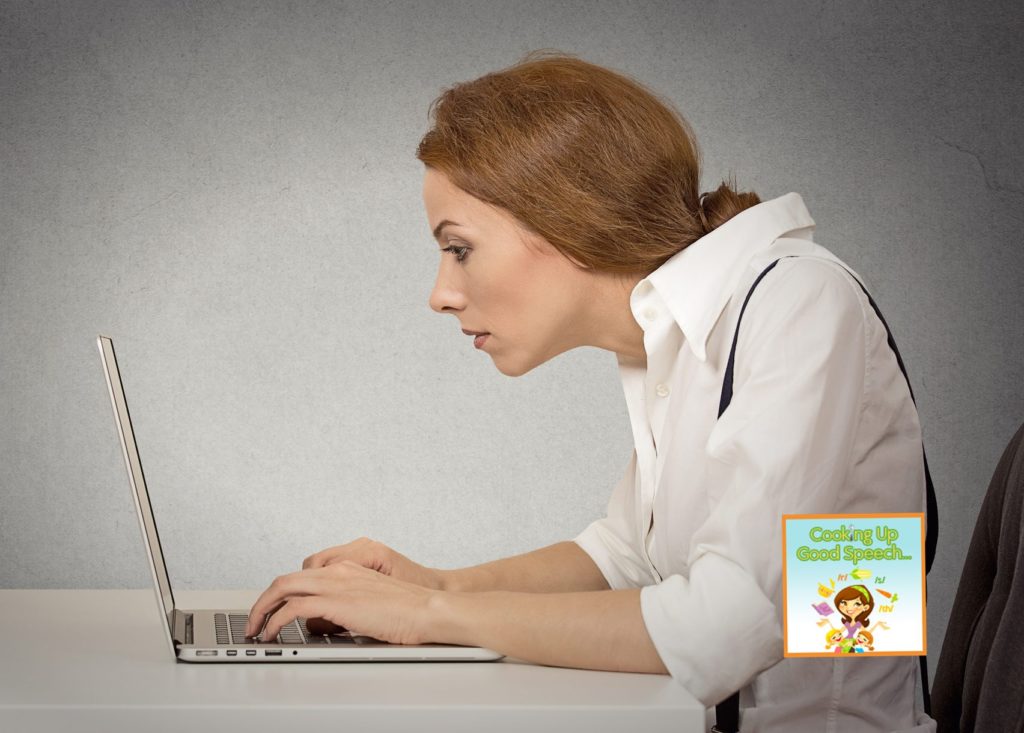
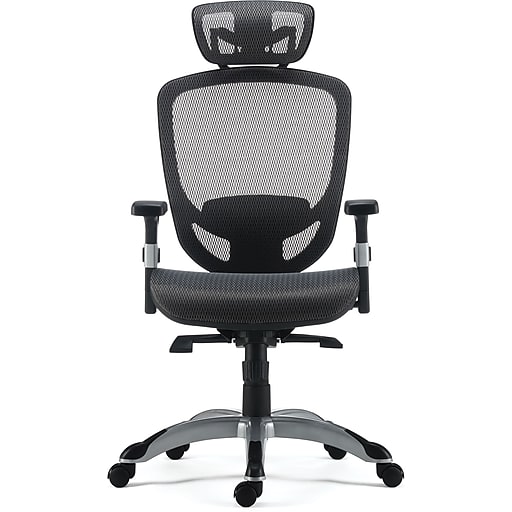
This is the ergonomic chair I purchased at Staples last year when the back pain started. It is supportive and lends to good posture. I keep this chair in my therapy room at school. 
I also use the McKenzie lumbar roll on my computer chair at home.
Design ensures proper spine alignment and posture while sitting, providing some relief for the lumbar (low back) region.
There are also options other than the traditional office chair, including a Swedish kneeling chair or a Swiss exercise ball. These two options encourage you to use your muscles for balance rather than slumping back into the chair.
- Leaning forward causes back strain, so you want to support the natural curve of your back with a chair that has proper lumbar support.
- You want your feet to be flat on the floor with your knees bent at about a 90-degree angle. A footrest or other prop can help
you to achievea better alignment. - Arms should also be at a roughly 90-degree angle so that your shoulders aren’t hunched over, which can cause significant upper back pain. Adjusting your armrests to an optimal angle can make a big difference. Your upper arms should be parallel to your spine. An armrest at the proper alignment takes the strain
off your shoulders and upper back. - Your computer monitor should be slightly below eye level and about an arm’s length away so that you aren’t leaning forward.
- Thighs should not rest on or press down on the edge of your chair. You want to be able to slip your finger underneath to avoid reducing circulation.
*I’m an Amazon Affiliate
2. Be mindful of how you sit, stand and move!
Sitting in the same position for hours at a time can contribute to many other issues, including heart disease, as well as weakening lower back muscles.
- Take mini-breaks during the day at least once every hour. This can involve something as simple as going for a glass of water or a cup of coffee or stretching for about 60 seconds.
- A sit-stand work station lets you alter your position over the course of the day. Recent research suggests that at least half your day should be spent standing rather than sitting.
- Good stretches can improve flexibility and keep pain at bay.
- Exercise to strengthen your core muscles and encourage proper posture.
- Taking a 15 to 20-minute walk at lunchtime will help to keep muscles and joints looser.
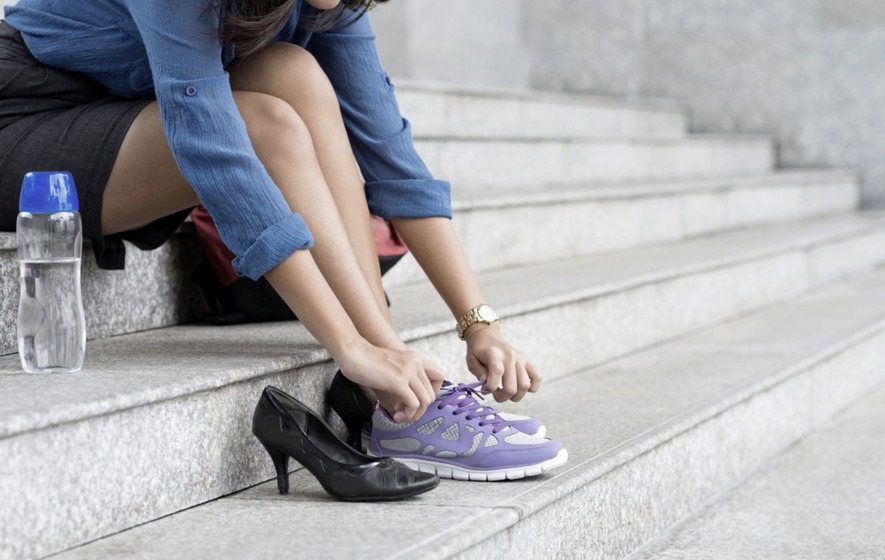
3. For the SLPs/educators who work with the pre-k/kindergarten crowd:
Teachers in primary and early-year classrooms can spend an average of 20,000 hours sitting on furniture designed for children during their 30-year career. In addition, teachers may be utilizing extra-low sinks and child-height computers and whiteboards – not to mention, sitting on the floor with students. Is there really any question why back pain when standing is experienced?
Avoid sitting on primary school furniture or stooping to meet the child’s eye level. Instead, lower your own chair and if available use the chairs chest support to keep your back aligned. See the picture below:

4. Some of the additional physical demands and challenges educators face:
- Teachers often stand “lecture-style” for extended hours, placing an extra burden on the low back and legs, which may lead to poor posture. Additionally, hard unforgiving surfaces can take their toll after prolonged standing.
- Sitting down for long periods when grading assignments.
- Bending or stooping over children at their desk.
- Lifting or carrying small children, heavy equipment or paperwork. Proper lifting techniques are vital to injury prevention.
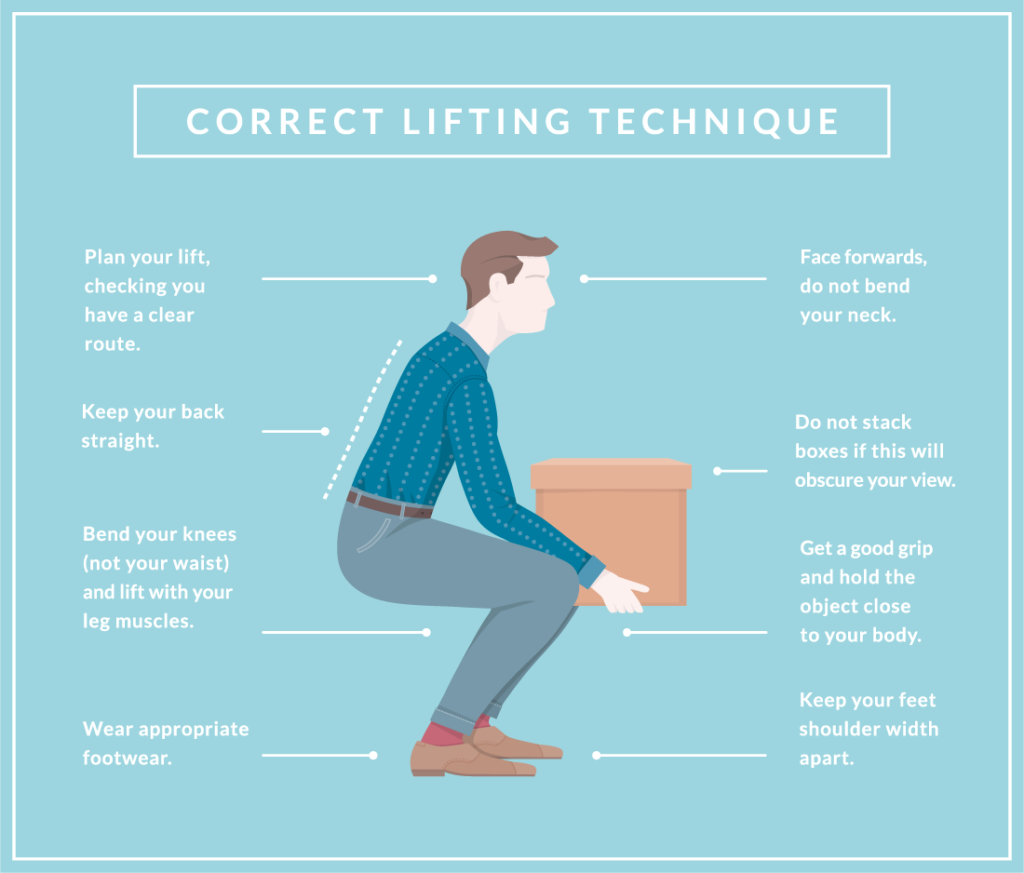
https://www.safetysign.com/help/h109/safe-lifting-tips

5. Wear the right shoes!
Healthy shoes play a significant role in back pain management. Shoes with good cushioning properties can reduce the impacts on the body and back when the foot hits the ground. High heels that are over two inches high may increase the risk of low back pain, as they might impair back posture. I love to wear heels, but have learned to scale down the size of the heel and the frequency in which I wear them!
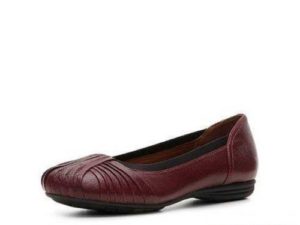
One of my favorite shoe brands is Cobb Hill. I like that this brand is both functional and fashionable. The shoe has amazing arch support (the sole is not flat like many other shoe brands) and the quality is superior. This shoe is made by the sneaker company New Balance. They know what they are doing when it comes to combining good support with style!
*I’m an Amazon Affiliate
6. Here are a few additional recommendations that SLPs/teachers can implement to improve their back health and reduce the likelihood of being affected by back, neck, hip and knee conditions later down the line :
- Use a high stool instead of standing for hours.
- Use a height adjustable table.
- Transport heavy paperwork or equipment on a wheeled trolley.
- Avoid excessive reaching and twisting by arranging items on your desk.
- Don’t always use a laptop positioned flat on a desk or in your lap. Laptops should be raised up or placed on a stand so the top of the screen is at eye level and used alongside a separate mouse and keyboard. The same applies when working at home.
- Try to observe the ‘30:30 rule’. Limit sitting to 30 minutes at a time, followed by a 30-second period of stretching and moving.
- Create safer storage areas by keeping heavier items between wrist and elbow height. See to it that students can safely retrieve their own equipment without having to rely on staff.
- Be comfortable before you begin. You can limit the need for stooping, twisting, crouching and bending over by setting furniture at the correct height, locating equipment within easy reach and altering how you or your students are positioned ahead of time.
- Don’t carry heavy bags on one shoulder. Instead, use a bag worn across your body and swap sides regularly. Open doors fully before you walk through, rather than twisting your spine as you pass through.
references:
https://www.teachwire.net/news/straight-talking-what-teachers-need-to-know-about-back-pain
www.aimsclinic.com/teacher-pain-relief
https://www.osha.gov/SLTC/etools/computerworkstations/positions.html











Leave a Reply